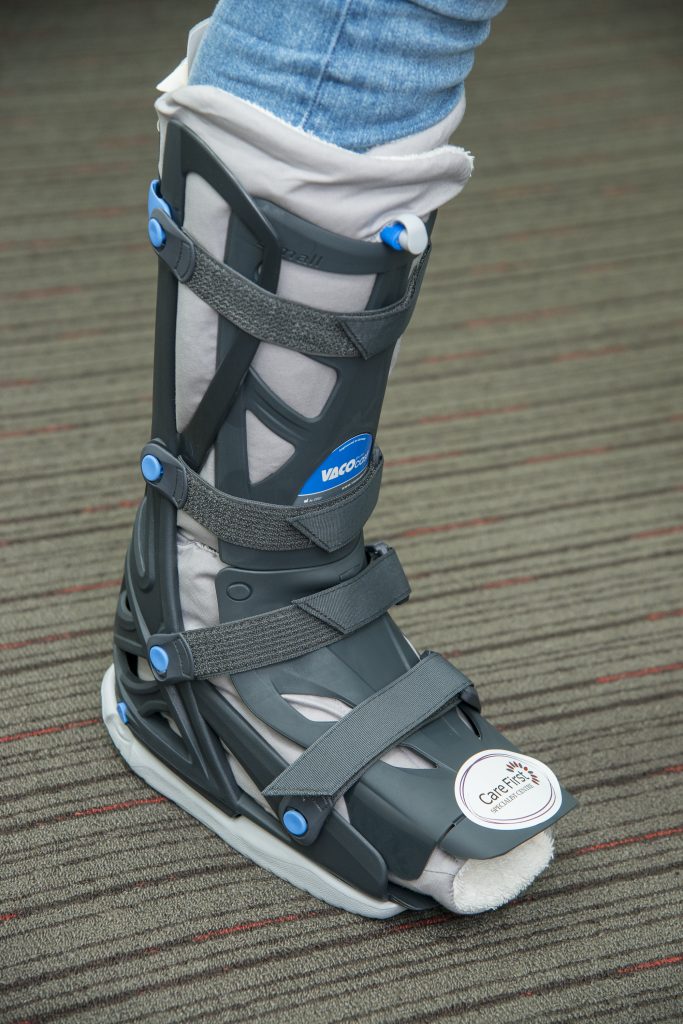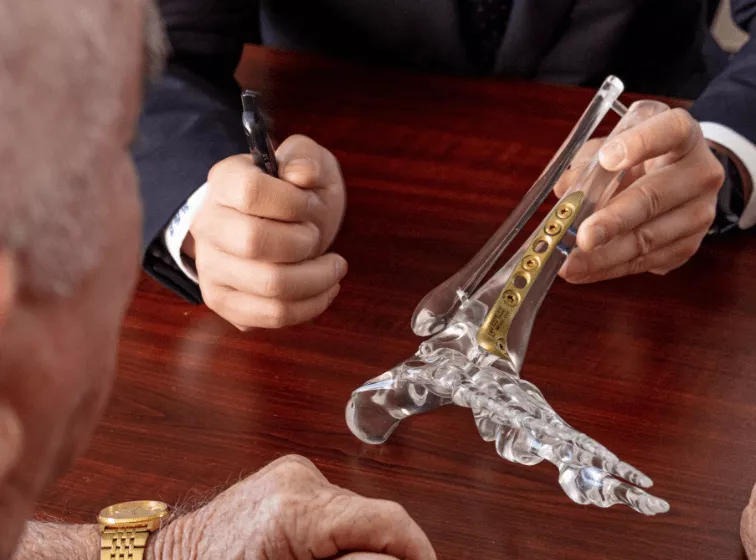Ankle Instability Treatments

What are the non-operative treatments for Ankle Instability?
Greater than 90% of ankle sprains recover with non-operative treatments. Non operative conservative management is the mainstay of treatment for ankle instability and is the first line of therapy that Dr. Chow will recommend before considering any operative intervention.
Conservative treatment for Ankle instability includes physiotherapy that focuses on strength, range of motion, proprioception, and balance to help support the ankle and prevent recurrence. Rest, ice elevation and compression is useful initially for swelling management along with non-steroidal anti-inflammatory drugs such as nurofen to reduce pain and inflammation. Occasionally a cortisone injection may be recommended.
What happens if Ankle Instability is left untreated?
If recurrent ankle instability is left untreated the ankle joint will remain unstable and continue to give way leading to damage withing the ankle joint. Damage to the cartilage will eventually lead to painful arthritis over the long term with may need surgical treatment at that time in the form of a fusion or replacement.
Do I need surgery for Ankle Instability?
If you continue to have symptoms of pain and instability despite exhausting all non-operative treatments surgery is usually recommended.
Book an Appointment Today!
What are the surgical treatments for Ankle Instability?
The goal of ankle instability surgery is to stabilize your ankle, relieve your pain and allow you to return to your normal daily activities.
The Ankle stabilization surgery consists of an ankle arthroscopy and lateral ligament reconstruction that can be performed in a day surgery setting. The ankle arthroscopy is keyhole surgery used to comprehensively inspect the inside of the ankle and remove any scar tissue and loose debris. The lateral ligament reconstruction is performed through a incision on the outside of the ankle where the ligaments are reconstructed and re-enforced to provide the ankle with stability.
What should I expect after Ankle Instability surgery?
Ankle stabilization surgery can be performed in a day surgery setting however some patients may need to stay overnight for observation and physiotherapy assessment. You will wake up in a moon boot and be made non weight bearing for the first 2 weeks. A blood thinner is commenced to prevent deep vein thrombosis for 6 weeks. At 2 weeks stitches are removed and gentle weight bearing with crutches is commenced along with physiotherapy. At 6 weeks post op the boot is ceased, and physiotherapy is continued for functional retraining and return to sport.

Potential complications of Ankle Stabilisation surgery
All surgical procedures involve inherent risk of complications. However, these risks are generally uncommon and quite infrequent.
These include anesthetic complications, wound infections, deep infections, nerve injuries, tendon injuries, bleeding, stiffness, chronic regional pain syndrome, blood clots, and failure of the procedure to relieve all of the presenting symptoms.
Patients can minimize the risk of complications by carefully following post-operative instructions.
